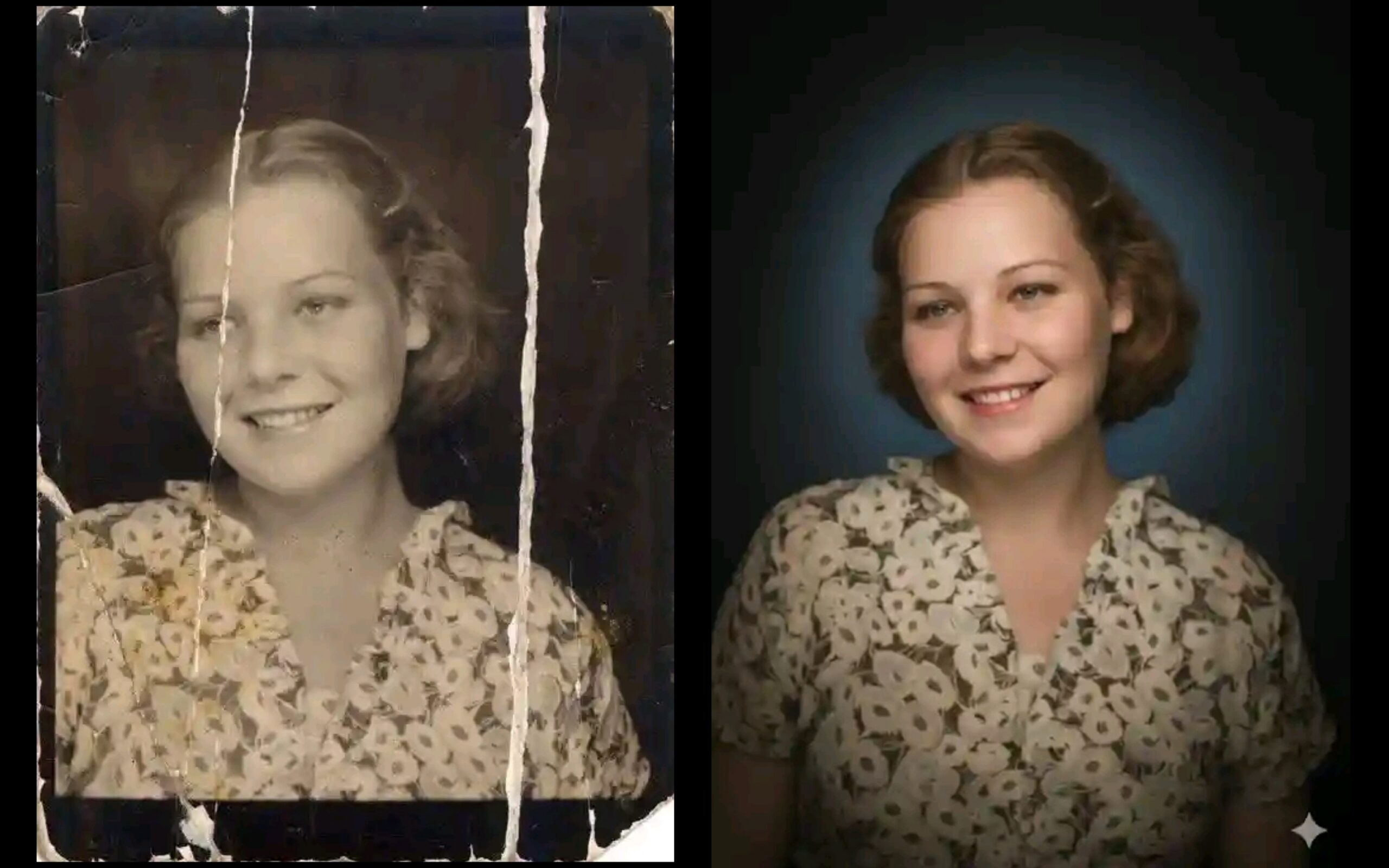Old family photos can be priceless—but also faded, damaged, or incomplete. AI tools like Nano Banana or DALL·E are now advanced enough to restore and enhance these images with stunning results. However, many people get lost in overcomplicated prompt recipes that add unnecessary fluff or technical jargon that doesn’t help the AI—and sometimes even hurts the result.
Good news: You don’t need a ridiculous wall of text to get studio-quality restorations. Below is a clean, effective prompt that does 99.9% of the job of those overly complex ones floating around online.
✅ The Simple AI Prompt for Photo Restoration
Prompt:
Repair, colorize and edit this picture like a modern editorial professional photostudio photo. Add sharpness, contrast, details, natural colors and neutral white balance. Add missing parts, and zoom out. Background is dark with a very soft circular blue spotlight behind the subject. Subtle vignette effect. Seed: 194576
That’s it. No emojis, no fake camera names, no unnecessary syntax.
If you want different results each time, just remove the Seed value. The seed helps generate consistent output for repeated generations, which is helpful if you find a look you love and want to recreate it.
🧠 Key Tips for Better Results
Want to get the best results possible from your AI restoration? Here are some helpful tips:
- Avoid Camera Names and Settings: AI doesn’t understand how an “EOS R5” or a “50mm lens” actually works. Including those terms can lead to randomness or generate unnecessary overlays. It’s better to describe the look you want instead (e.g., “studio-quality lighting” or “sharp focus on face”).
- Forget the Negative Prompts: Modern AI doesn’t need warnings like “don’t add six fingers.” It already knows the basics. Overloading your prompt with negative instructions can distract from your main goals.
- Be Descriptive, Not Technical: Describe what you want the image to look like, not how you think the AI should generate it. Words like “sharp,” “natural colors,” “balanced lighting,” and “zoomed out” are more helpful than trying to fake technical language.
- Zoom Out Thoughtfully: Adding “zoom out” allows the AI to reconstruct missing portions like cropped hair or shoulders—very useful for restoring portrait-style images where parts of the subject are cut off.
- Use a Seed When You Want Consistency: If you find a generation you love, keep the seed. That way, if you need to reprocess a similar photo later, you can get matching visual results.
📌 Final Thoughts
AI is a powerful tool for restoring, enhancing, and even reimagining old photographs. But getting great results doesn’t require complicated prompts. In fact, the simpler and more intentional your language, the better the AI can understand what you’re asking for.
Give the prompt above a try with your favorite AI image tool and watch your memories come back to life—clean, colorful, and beautifully restored.
